Denver dance group opens its season with a high-energy program set to Queen, The Rolling Stones and David Bowie.
Wonderbound’s warehouse theatre space is currently shaking like a concert hall, but instead of guitars and rock stars, it’s pointe shoes and contemporary dancers doing the rocking. Garrett Ammon’s Rock Ballets brings together the swagger of The Rolling Stones, the theatricality of Queen and the dreamlike strangeness of David Bowie in one tightly packed evening.
What could easily read as a nostalgia trip instead feels like a layered reflection on time. In addition to the stories told within each dance centered on this theme, the show serves as a retrospective on Ammon’s own development as a choreographer. Two of the three ballets come from his early years with Wonderbound (then called Ballet Nouveau Colorado), offering a rare chance to see how his voice has developed while still circling back to themes — like repetition, momentum and the passage of time — that remain at the heart of his work.
The program is billed as a 90-minute rollercoaster of “high-octane dance and killer soundtracks,” and for the most part, it delivers. Though the opening section feels slighter than the rest, the evening builds in momentum, reminding audiences why Wonderbound has become Denver’s most adventurous contemporary ballet company.
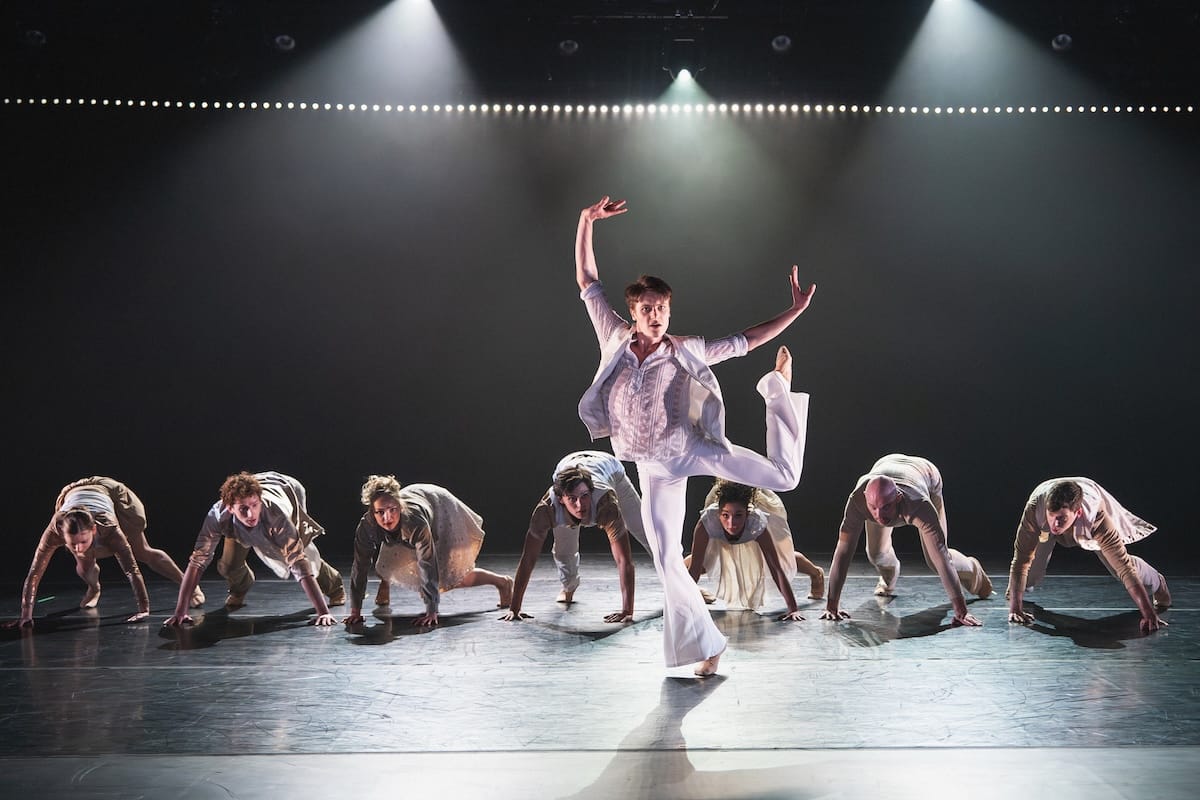
Ezra Schenck is featured in one of the numbers in ‘Rock Ballets.’ | Photo: Amanda Tipton Photography
A Rolling Stones road trip
The newest work on the bill, The Evening of Day, set to music by The Rolling Stones, makes its world premiere here. Featuring six dancers, Alexa Kearnan, Rachael Dean, Logan Velasquez, Tanner Thurn, Roan Zaragoza and Nathan Mariano, the piece plays out like a breezy road trip with moments of sitcom humor.
The ensemble moves through cinematic vignettes as we watch three couples joyride, break apart and come back together. In one particularly amusing scene, we see one dancer perched in front of a television, flipping through channels while the rest of the cast rushes to embody whatever appears on the screen. Throughout, a bright red bench anchors the stage, serving as both a car and a prop for playful balancing acts, keeping the mood buoyant.
The music, “(I Can’t Get No) Satisfaction,” “She Smiled Sweetly,” “As Tears Go By,” “No Expectations” and “You Can’t Always Get What You Want,” gives the piece a sense of progression, but the emotional stakes never match the music. The arc of conflict, resolution and reunion is predictable, and by the time the dancers finish with “You Can’t Always Get What You Want,” the happy ending feels at odds with the song’s bittersweet ambivalence.
Ammon’s choreography remains sharp and athletic, but compared with the two works that follow, The Evening of Day comes across as the softest entry of the night.
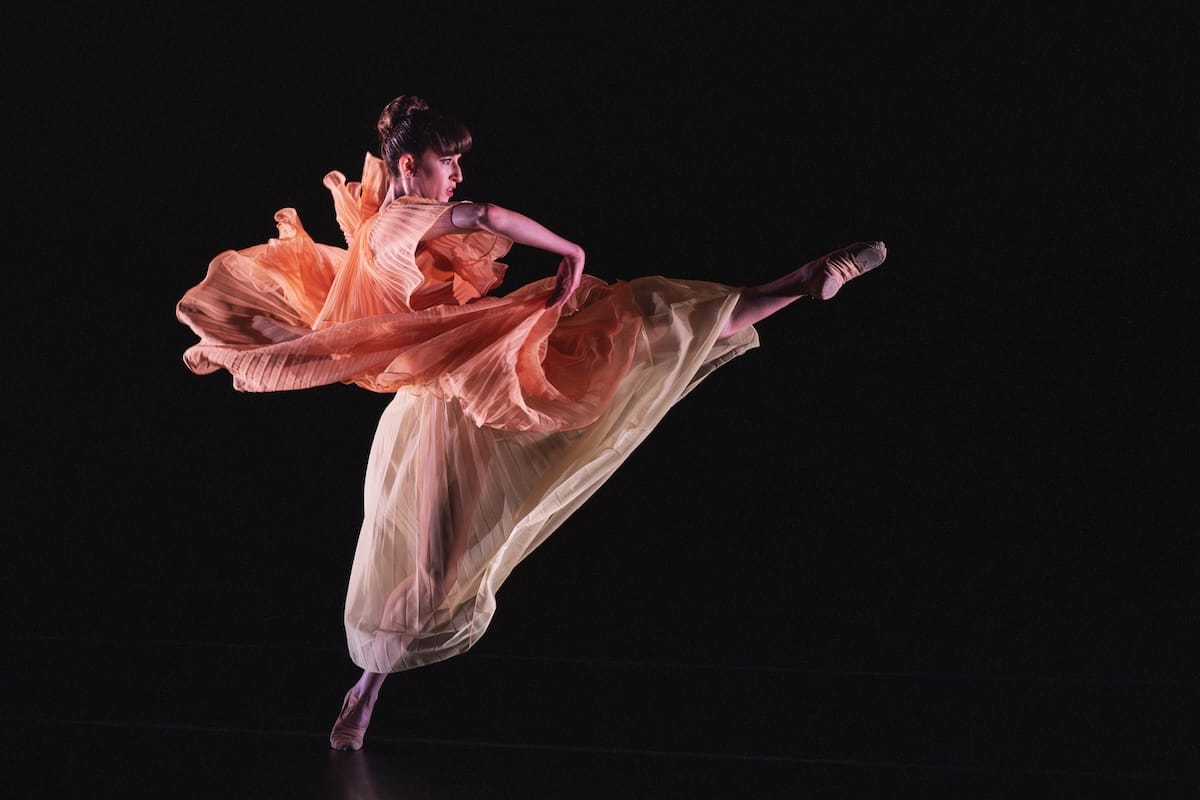
Morgan Sicklick as a mother in ‘Love of My Life.’ | Photo: Amanda Tipton Photography
Queen’s operatic drama
The evening lifts off in the second section, Love of My Life, which premiered back in 2007 but feels freshly poignant today. Fact is, much of Queen’s catalog already sounds like it was written to be staged in a highly theatrical live production, and Ammon and his dancers don’t disappoint.
At its heart is a mother-son story, danced with grace and intensity by Morgan Sicklick and Ezra Schenck. Sicklick opens with a breathtaking solo to “You Take My Breath Away,” her long lace-trimmed gown rippling as she moves, embodying both devotion and dread as she confronts the inevitability of letting go.
What follows is a cycle of embrace, resistance and reconciliation as Schenck’s character grows into independence, supported and challenged by an ensemble whose presence alternates between celebratory and foreboding. The Queen soundtrack gives the section its operatic sweep: the kaleidoscopic rush of “Bohemian Rhapsody,” followed by the tenderness of “Love of My Life,” the boisterousness of “We Are the Champions” and finally the uplift of “It’s a Beautiful Day.”
Each song marks a shift in tone, and Ammon leans into the contrasts — frenetic choreography one moment, quiet vulnerability the next. Lighting designer Andrew McDaniels heightens those shifts with strobing floor lights, quick blackouts and dramatic cross-fades, keeping pace with the music’s volatility.
Costumes also contribute to the mood, with men wearing bright, retro-inspired shirts and women wearing bold dresses that flare with movement, capturing the exuberance and fragility of the story being told. By the end, when Sicklick and Schenck reunite in “It’s a Beautiful Day,” the narrative resolves in hard-earned release.
If the Stones piece was playful, this one proves Ammon can dig deeper, finding true narrative resonance in pop anthems.
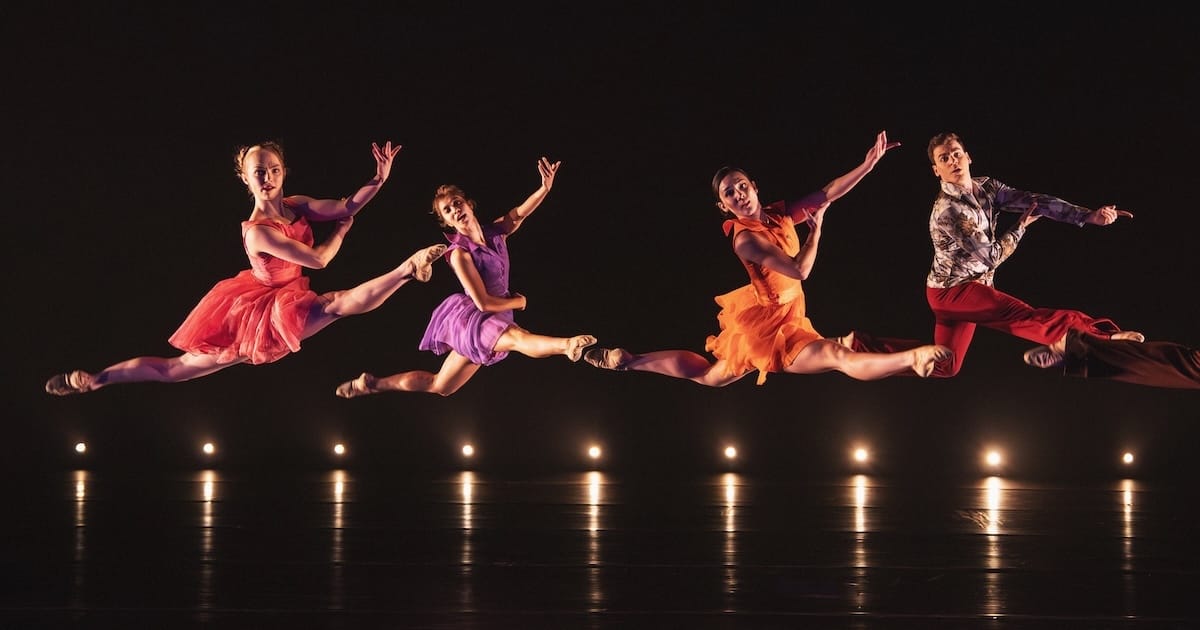
Image by Amanda Tipton Photography
Bowie’s dreamscape
The evening closes with An Occasional Dream, first premiered in 2008, a surreal and more abstract meditation set to the music of David Bowie. Where the Stones section leaned on humor and Queen on melodrama, Bowie’s music inspires something more enigmatic.
A glowing suitcase becomes the central symbol, passed from dancer to dancer like a precious or dangerous secret. At times it’s clutched tightly, at others abandoned, and always it seems to hold the power to illuminate or unsettle whoever touches it.
Visually, the section is striking. Costumes shimmer in pale whites and muted golds, giving the ensemble an otherworldly sheen. The lighting, sculptural and atmospheric, casts long shadows across the stage, while the sudden burst of light from the suitcase itself jolts the audience into attention each time it’s opened. These design choices heighten the piece’s sense of mystery, as if the dancers were caught between earthbound reality and Bowie’s cosmic dreamscapes.
The choreography is restless and searching: Sharp lunges dissolve into spiraling runs, duets break apart as quickly as they form, and the entire cast circles the stage in recurring patterns that suggest cycles of time and grief. One unforgettable moment features a dancer running lap after lap around the stage in silence, until her labored breathing becomes its own soundtrack — a visceral embodiment of exhaustion, persistence and the passage of time.
Though the narrative is deliberately opaque, the atmosphere is magnetic. Audiences may not walk away with a clear storyline, but they are swept into an emotional current that mirrors Bowie’s own blend of theatricality and vulnerability.
The Wonderbound Effect
Rock Ballets may not be Wonderbound’s most elaborate production, but it succeeds on its own terms. It feels less like a tentpole show and more like a curated mixtape, charting Ammon’s long-running fascination with time, memory and the enduring pull of pop culture.
Seats are scarce — closing night is already sold out — and it’s easy to see why. Even when not operating at their grandest scale, Wonderbound offers a night of dance that is vibrant, accessible and unapologetically entertaining.
I’ve often joked that Wonderbound specializes in high-octane ballet for dads. And while they certainly aren’t beating that accusation with this show, beneath the spectacle is a thoughtful meditation on time that binds the evening together. Whether in the breathless laps of An Occasional Dream or the bittersweet tenderness of Love of My Life, the program engagingly asks what it means to keep moving forward while still circling back to what matters most.
A Colorado-based arts reporter originally from Mineola, Texas, who writes about the changing world of theater and culture, with a focus on the financial realities of art production, emerging forms and arts leadership. He’s the Managing Editor of Bucket List Community Cafe, a contributor to Denver Westword and Estes Valley Voice, resident storyteller for the Bonfils-Stanton Foundation and co-host of the OnStage Colorado Podcast. He holds an MBA and an MA in Theatre & Performance Studies from CU Boulder, and his reporting and reviews combine business and artistic expertise.
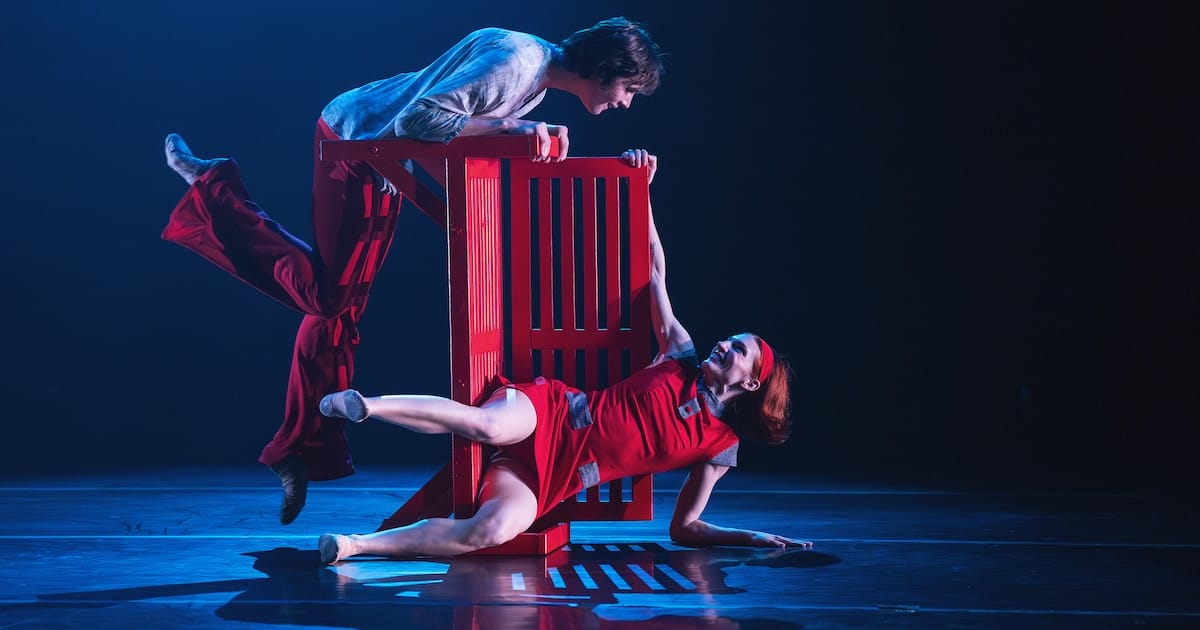


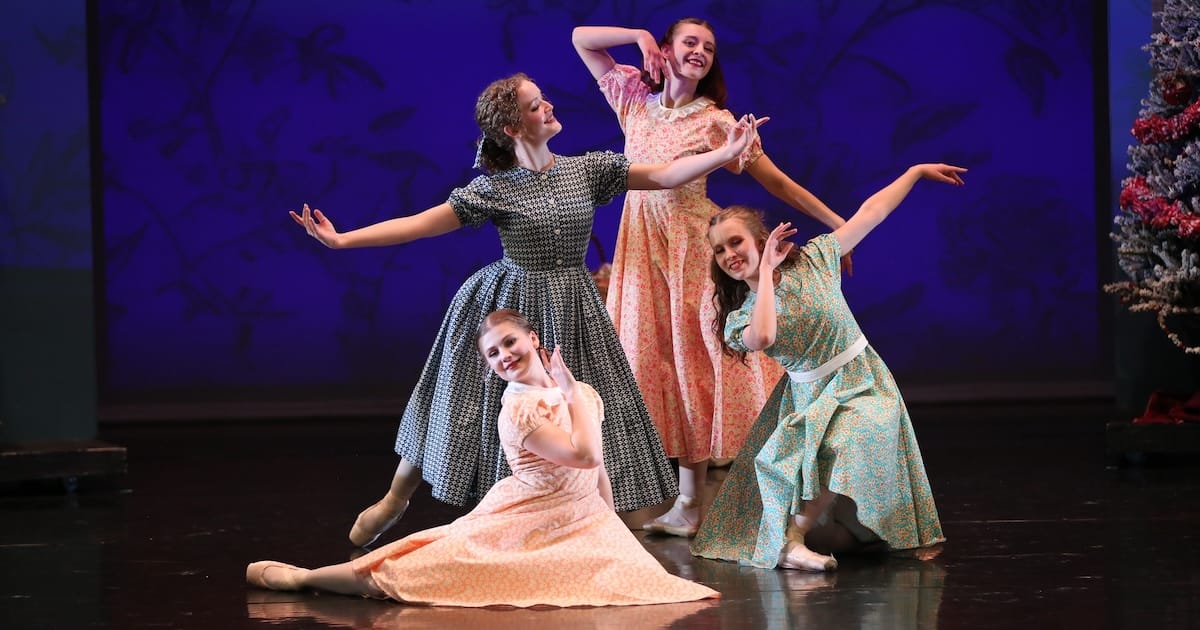


Leave A Comment